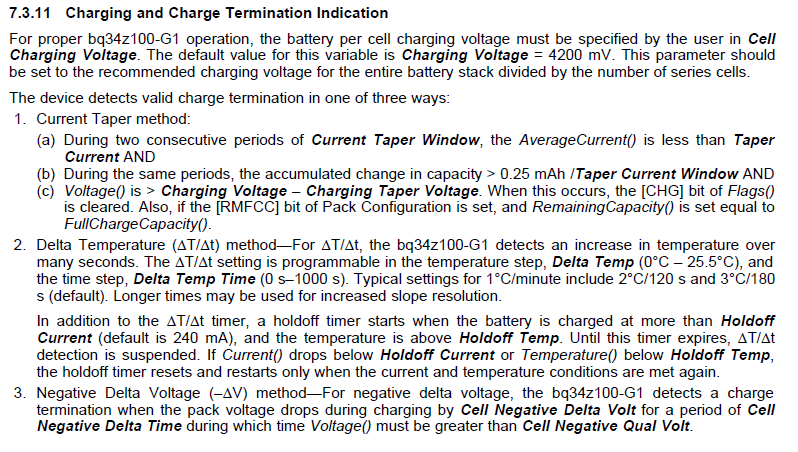BQ34Z100-G1 charge termination indication is explained in SLUSBZ5B as revised July 2016, section 7.3.11 but 1(b) gives a puzzling description of how the threshold for accumulated change in capacity can be calculated. The reference to 0.25 mAh presumably refers to whatever value is stored in flash starting at subclass ID 36 and offset 2 which is labelled “Min Taper Capacity” and said to have a default of 25 mAh (not 0.25 mAh). The reference to Taper Current Window must refer to the flash location of the same name (subclass ID 36 and offset 6) for which the unit seems to be seconds (not hours). A worked example of a calculation for any accumulated change in capacity threshold would therefore be helpful, especially to people not using the evaluation hardware or software. Could anyone spare the time to provide one, please?
-
Ask a related question
What is a related question?A related question is a question created from another question. When the related question is created, it will be automatically linked to the original question.


